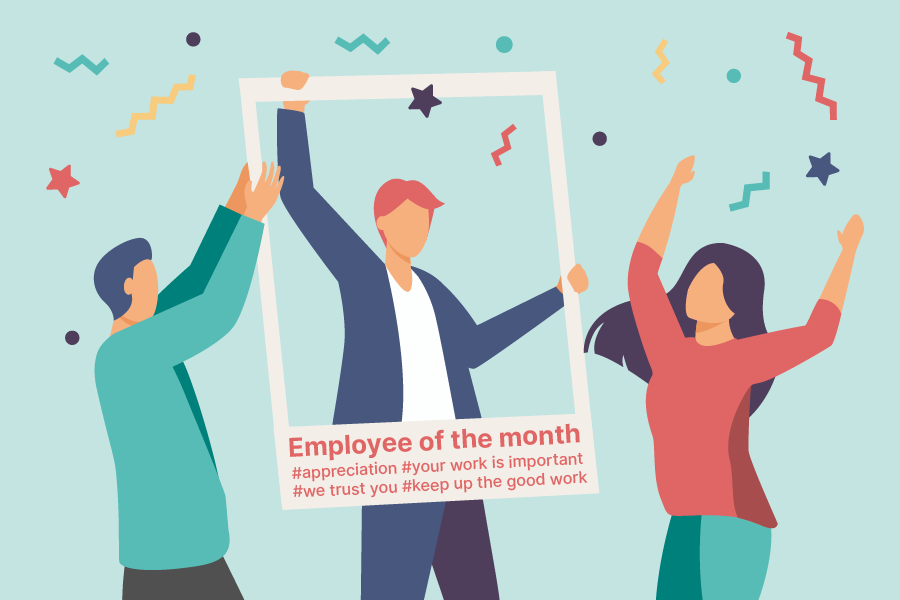Eager to improve? Here’s how: Embracing change management and escaping comfort zones
When organizations undergo changes or introduce new technologies, it’s crucial to consider the challenges, especially those that directly affect employees. Unlike other resources, the human workforce makes decisions, evolves, and its opinions shape its attitude towards work. This employee attitude is a pivotal factor in the success of any business transformation or the implementation of smaller technology-driven changes. Predicting how colleagues will react to change is a challenge, as stepping outside one’s comfort zone is inherent to change. One thing is certain: business leaders and human resources experts must be ready to encounter resistance when employees are asked to alter routines and step beyond their comfort zone. How can we create an environment where colleagues can thrive and adapt?
Reaching new goals requires leaving behind the comfort zone
We’ve all experienced confidently navigating tasks we’ve done countless times before. But what about attempting unfamiliar tasks that disrupt routines and yield uncertain outcomes? Acknowledging that progress sometimes necessitates leaving comfort behind is easy in theory but complex in practice. Let’s have a look at Luckner and Nadler’s model to understand why change is so hard.
The model comprises three concentric circles: the comfort zone at the core, followed by the learning zone, and then the panic zone. Tasks are categorized based on the comfort they elicit, with routine tasks residing closer to the core. More emotionally taxing tasks are placed farther out. The placement varies from person to person based on preferences, skills, and experience. However, a common thread among all is the potential to expand and further develop the comfort zone.
Initially, new tasks demand extra attention and can be draining and demotivating for workers. Within the change process, addressing fear and uncertainty – the two main factors anchoring colleagues in their comfort zones – is vital. These natural feelings are part of the learning process; controlling them, rather than eliminating them entirely, is key in any transformative process. Fear often emerges as fear of failure or humiliation. In the panic zone, this fear can become overwhelming, immobilizing action. Uncertainty can also hinder performance related to task execution, insecurity, and coping.
Building trust with employees and supporting factors and forces that help employees step out of their comfort zones—like curiosity, excitement, the sense of challenges, and the thirst for learning—are paramount.
Recognizing employee achievements is a rewarding incentive, brings in renewed motivation for future work and reinforces trust in management. Research underscores that personal and public recognition post-goal attainment has the most positive impact on building trust. Public acknowledgement and celebrating achievements not only inspires improvement in the individuals involved but also across the entire workforce.

Empowering Autonomy
Trust is a two-way street: for employees to trust us, we need to trust them. One effective way to demonstrate this principle is by giving employees the freedom to choose, perhaps in terms of the projects they wish to engage with. Granting autonomy not only boosts employee motivation, but also fosters innovation by welcoming diverse perspectives and solutions.
Clear and Attainable Objectives
Having well-defined and achievable goals acts as a powerful shield against uncertainty.
When goals are either too vague or unattainable, employees may hesitate to fully engage. Conversely, goals that are too easily reached lack the challenge that stimulates growth and can lead to monotony. Management plays a pivotal role in seeking regular input, to customize objectives and monitor progress. The pulse survey serves as an effective tool for this purpose, delivering real-time insights that can be swiftly measured. With the pulse survey, employees tend to provide honest responses, as they aren’t constrained by the pressure of speaking face-to-face with their manager. This approach guarantees anonymity, encouraging them to share if they’re finding their current role unstimulating and in need of more challenge. It also increases the likelihood that they’ll use the pulse survey to seek support, particularly when facing new work tasks they might struggle with.
Fostering Workplace Relationships and Effective Communication
While some might think the workplace is not for making friends, a skilled leader understands that strong collegial bonds are a vital recipe for success. These positive relationships also bolster employee engagement and performance. According to an OfficeVibe survey, a whopping 70% of employees view workplace friendships as the cornerstone of a contented professional life. Encourage relationship-building by arranging collaborative team-building activities, like engaging games!
Numerous CHEQ partners, including Bosch, Maxon, and DPD, took the opportunity to organize a guessing game during the World Cup season. A remarkable 22,743 individuals participated, transforming the event into a unifying workplace experience where game and cheers for the World Cup were intertwined. What’s more, the game also introduced 31 new CHEQ users and saw 475 participants correctly predicting Argentina’s triumph, adding an extra layer of excitement to the game.
According to a recent survey, only 40% of employees feel adequately informed about their company’s goals, strategies, and tactics. When employees can clearly comprehend their objectives, they perform their roles more efficiently and with less stress. Furthermore, a strong connection forms between them and new company initiatives and goals. Elevate workplace success by providing your colleagues regular status updates through CHEQ’s Communication feature. This method blends structured communication with valuable personal feedback and coaching-based leadership that drives change.


